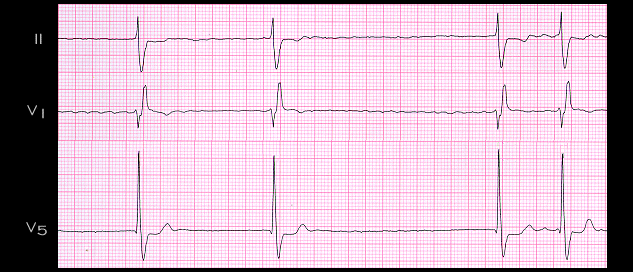
In patients with AV nodal disease, and/or in patients receiving drugs which slow AV nodal conduction, the ventricular response to atrial fibrillation may be quite slow, reflecting the presence of high grade AV block. In some of these patients, atrial impulses are conducted to the ventricles and the rhythm remains irregular. In others, an AV nodal escape pacemaker emerges and the rhythm becomes regular.
The ECG shown here is from a 74 year old male with known coronary artery disease and atrial fibrillation who was being treated with a beta adrenergic blocking agent. It demonstrates atrial fibrillation and high grade AV block with an irregular ventricular rate of 44. The RR intervals vary between 0.68 and 2.70 seconds. The QRS complexes show right bundle branch block and there was left axis deviation, suggesting bifascicular intraventricular block. These findings suggest that diffuse conducting system disease as well as the beta adrenergic blocking agent may have been responsible for the high grade AV block.
